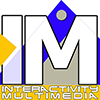Contents
Interactive maps are digital tools that allow users to engage with and explore geographic or conceptual information in a dynamic way. Unlike static maps, interactive maps provide various features such as clickable elements, zooming, and panning, which enable users to access detailed information about specific locations or items by simply interacting with the map. These maps often incorporate multimedia elements like images, videos, and animations to enhance the learning experience, making complex information more accessible and engaging. Interactive maps are widely used in education, data visualization, and various industries to facilitate better understanding and analysis of spatial and conceptual data. We implemented the example using the H5P framework.
Learning Unit Overview
This learning unit explores the essential components of a computer network, including routers, switches, wireless access points, network interface cards, firewalls, modems, servers, and cabling. Each component’s function within the network is detailed, with interactive elements allowing users to see their roles and effects in real-time. By engaging with these elements, learners gain a comprehensive understanding of how data is transmitted and managed within a network.
Interactive Learning Approach
The interactive map in this learning unit employs an active learning approach by allowing users to click on various network components to reveal detailed information and interactive demonstrations of their functions. This hands-on method helps learners visualize and comprehend complex networking concepts by simulating real-world scenarios and network configurations. For instance, users can see how a router prioritizes traffic, how a firewall filters data, or how different cabling affects data transmission speeds.
Beyond Clicking: Active Learning Assignment
While clicking on items provides valuable insights, active learning requires more profound engagement. Therefore, learners are assigned to create a list of the network items and write a one-sentence explanation of each in their own words. This task, to be completed with a pencil and a sheet of paper, ensures that learners internalize the information and can articulate their understanding independently.
We used this example for a demonstration of interactive maps. The example comes from the DigiComPass project This project aims to develop a training course on digital competences based on the DigComp framework 2.2 for Citizens.
Views: 1
